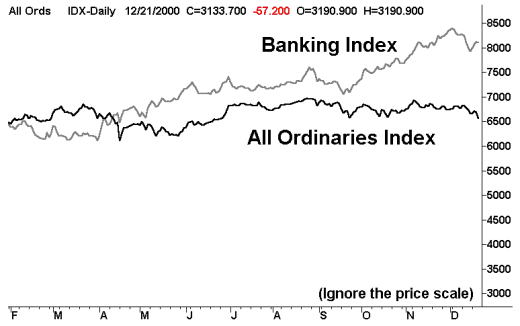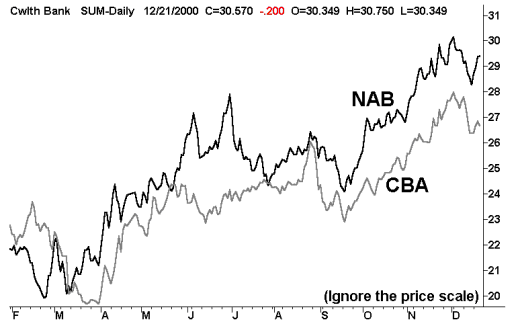- Active Investing - what is it?
- All Weather Trading Plan using Complex Theory (Parts 1 - 4)
- Asset Management (Parts 1 - 4)
- Back Testing
- Breaking out from consolidation
- Breakout trading in all market conditions
- Charting in a Nutshell
- Children of the Bear
- Fibonacci and the Golden Ratio
- Going Public
- Hull Moving Average
- MACD Breakout Trading (Parts 1 - 2)
- Making decisions with a Simple Moving Average
- Probability: do you have the stomach for it?
- Profit Taking
- Relative Strength
- Record Keeping
- Risky Business
- Short Selling
- Social Media Bubble
- Switching Gears
- Rate of Return indicator
- Time and Money
- Tools of the Trade
- Trade Warrants (Parts 1 - 4)
- Trading without spending money
- Trendlines
- Triangles
- GMMA's on Weekly Charts
- Writing Custom Indicators
Articles include:
Most modern charting methods and trading strategies would not be possible without the use of personal computers and the availability of market data. Modern computing power enables all of us to perform daily or weekly searches of the entire stockmarket from the comfort of our own homes. I can test every single share that is listed on the Australian Stock Exchange for any characteristic that can be measured by an existing indicator such as the MACD or an indicator of my own construction. These market searches/scans are classified as bottom-up analysis because we are examining the market from the bottom up as opposed to performing a top-down analysis where we would begin our scan of the market by checking the main or sector indexes. In the early 1990's bottom-up analysis was uncommon and in the 1980's it was virtually unheard of as the cost of market data and charting programs would run well into the thousands of dollars.
Prior to the use of computers an individual would check the listing in the weekend newspaper of the different market sectors. You would locate a particular sector that was outperforming the rest of the market and then limit your search to shares that belonged to that particular sector. This type of analysis was referred to as sector analysis. Given the limitation of having to manually search through a newspaper, this method was a valid and very effective shortcut. It would quickly point you in the direction of 30 or 40 shares that were probably outperforming the rest of the market. The modern equivalent of this type of analysis is referred to as Relative Strength analysis. There are many strategies based on relative strength whereby shares are compared with sector indexes which are compared with each other or with market indexes such as the All Ordinaries. The following chart shows a comparison of the All Ords with the Banking Index.

The chart on the previous page indicates that the banking sector has outperformed the rest of the Australian Stockmarket during the past year. This points us in the direction of the major banking shares and we can examine the relative strength of CBA and NAB.

The above chart tells us that, on a relative strength basis, the National Australia Bank has marginally outperformed the Commonwealth Bank over the past year.
The problem with relative strength is that it is a comparative method that requires us to define a frame of reference. The simple approach that I have illustrated above ensures that we are looking at shares within an Index that is outperforming the All Ordinaries Index. We are therefore anchoring our whole approach to the market on the performance of the All Ordinaries Index. If the All Ords is performing well then this method will serve us well. But if the All Ords is performing poorly, ie. 5% annual growth, then we could be achieving as little as 8% annual growth on a share that has been chosen using relative strength. We must also bear in mind that we do have ready access to computers and market data and the shortcut that relative strength offers us is now of reduced benefit.
Bottom-up analysis allows us to base our market searches on any frame of reference that we desire. For instance we could check every individual share to see whether or not it is rising by at least 25% per annum. This approach works independently of the broad market and/or the All Ordinaries Index. If either NAB or CBA can achieve a rate of return of 25% per annum then they will be picked up by our bottom-up analysis of the market. So why use Relative strength? Because, whilst I consider relative strength inferior to bottom-up analysis, it will help shift the balance of probability even further in my favour. Why not search for shares that are rising by at least 25% per annum and ensure that they belong to a sector that is outperforming the rest of the market as well. After all... no one said you have to stick to just one approach.